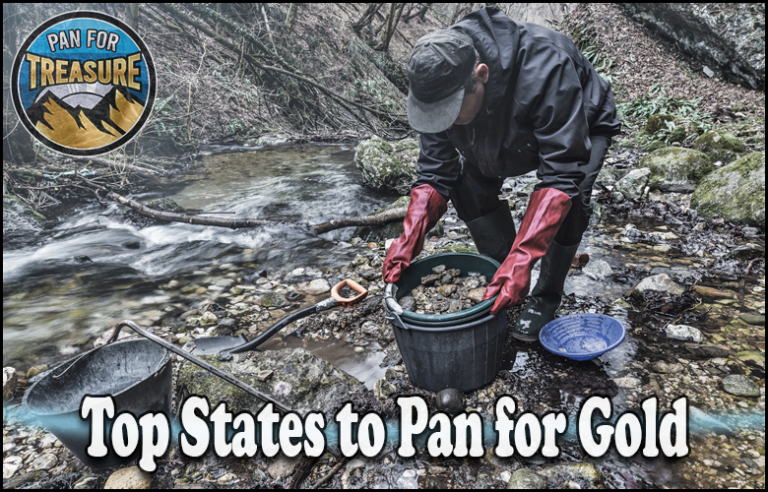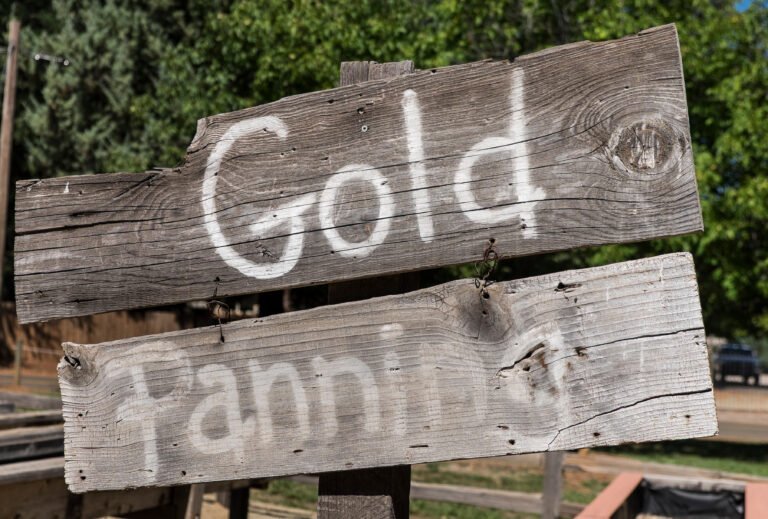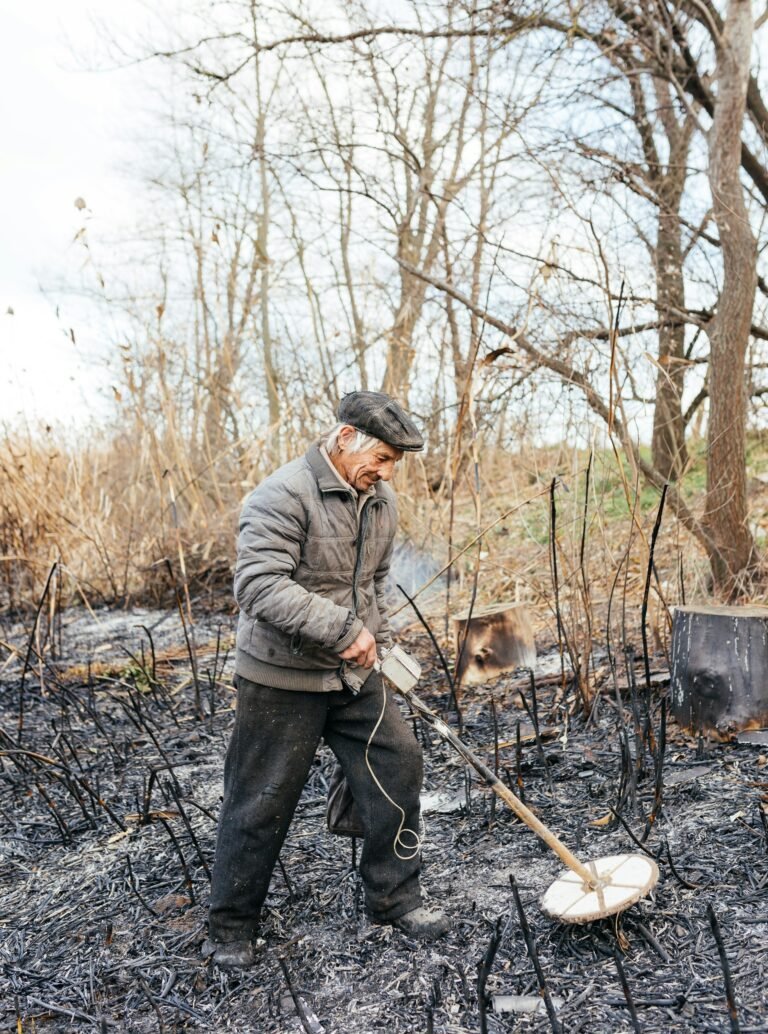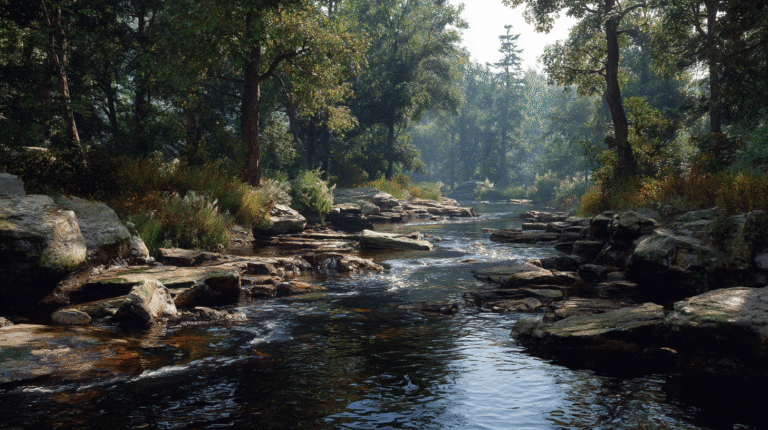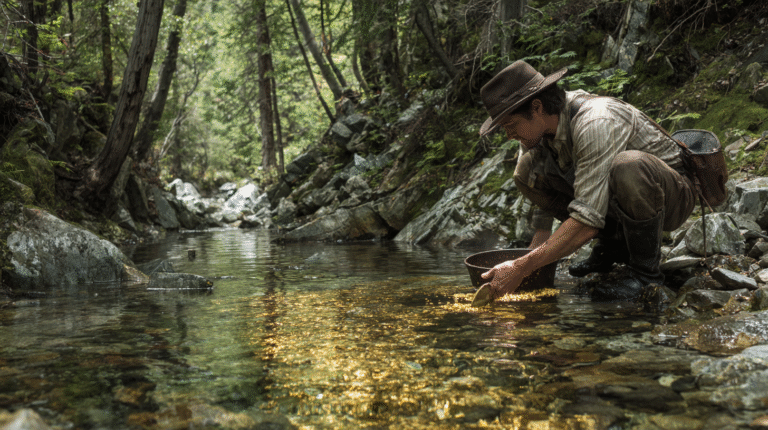Gold panning is a popular hobby in the United States, with enthusiasts searching for the glittering treasure hidden in rivers, streams, and mountains.
But can you just pan for gold anywhere? The answer is not that simple.
While it may be tempting to grab a pan and start searching for gold in any location, not all areas are suitable for finding this precious metal.
It is essential to choose the right gold panning locations to increase your chances of striking gold.
Key Takeaways:
- Not all areas are suitable for gold panning, so it’s important to choose the right locations.
- Research the area before you go to determine if there is a possibility of finding gold.
- Familiarize yourself with the laws and regulations governing gold panning in the specific location.
- Some public lands have designated areas where gold panning is allowed.
- Consider purchasing gold placer claims to have exclusive rights to prospect in a specific area.
Choosing the Right Location for Gold Panning
When it comes to gold panning, finding the right location is crucial for a successful prospecting experience.
Before you grab your gold pan and head out, take the time to research the area to increase your chances of finding gold. Here are some tips to help you choose the best places to pan for gold:
- Research: Look for areas with a history of gold production. Check geological reports, historical records, and local mining publications to gather information on potential gold-bearing locations.
- Evidence of Gold: Look for signs of gold in the area such as geological formations associated with gold deposits, presence of gold-bearing minerals, and evidence of past mining activities.
- Permit and Permission: Ensure that gold panning is legal in the chosen location. Some areas may require a permit or permission from the landowner to pan for gold. Always respect private property and obtain the necessary permits if required.
Remember, choosing the right location significantly increases your chances of finding gold. Conduct thorough research, seek permission if necessary, and focus your efforts in areas with evidence of gold. Happy prospecting!
| Gold Panning Tips | Best Places to Pan for Gold | Gold Prospecting |
|---|---|---|
| Research the area beforehand | Look for areas with a history of gold production | Conduct thorough research on potential gold-bearing locations |
| Seek evidence of gold in the area | Check for geological formations associated with gold deposits | Identify signs of gold-bearing minerals in the location |
| Ensure legality and obtain necessary permits | Verify if gold panning is permitted in the chosen location | Respect private property and acquire any required permits |
Legal Considerations for Gold Panning
Before embarking on your gold panning adventure, it is important to familiarize yourself with the laws and regulations that govern this recreational activity.
Different areas have specific rules and guidelines regarding access, permission, and equipment usage to protect both the environment and the rights of others.
Ignorance of these rules can lead to legal consequences and potential forfeiture of any gold discovered. Stay informed and ensure a lawful and enjoyable gold panning experience.
Key Legal Considerations:
- Familiarize yourself with the specific gold panning rules and regulations in the location where you plan to pan.
- Understand the access requirements and permissions needed to pan in a particular area, especially if it is on private property.
- Research any permits or licenses necessary to legally pan for gold.
- Comply with size and weight restrictions for mining equipment, as well as guidelines for responsible environmental practices.
- Respect any restrictions on the collection of artifacts, fossils, or other natural resources.
- Be aware of any limitations on the sale or trade of any gold found during your panning activities.
Remember, following gold panning rules and regulations not only ensures a legal experience but also contributes to the preservation of our natural resources for future generations.
By adhering to the guidelines established by local authorities and agencies, you can enjoy the thrill of gold panning while respecting the rights of others and the environment.
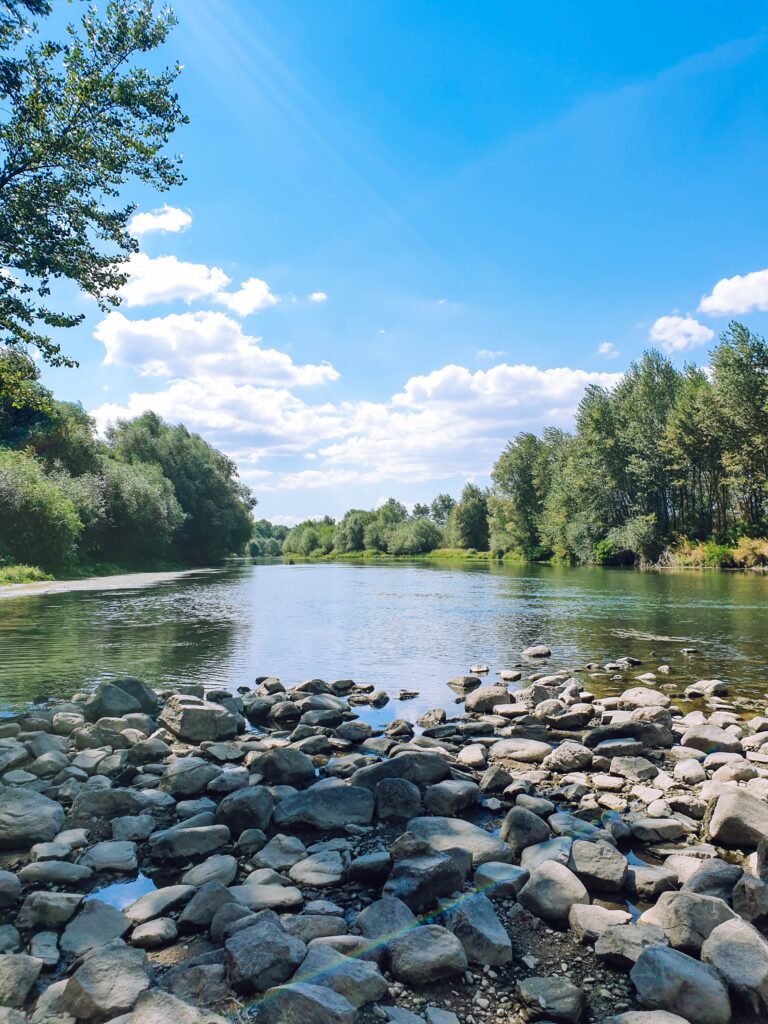
Disclosure: This Post Contains Affiliate Links; We earn a commission on purchases.
| Location | Access Requirements | Permits/Licenses | Equipment Restrictions | Environmental Guidelines |
|---|---|---|---|---|
| State A | Public land access allowed | No permit required | No restrictions | Follow Leave No Trace principles |
| State B | Private property access with permission | Permit required | Equipment size and weight limits | Prevent water contamination |
| State C | Designated recreational areas only | Recreational gold panning license | Hand tools only | Revegetation requirements |
Finding Publicly Accessible Gold Panning Locations
Looking to try your hand at gold panning?
The good news is that some public lands offer opportunities for recreational gold panning.
However, it’s essential to find out if a specific area allows gold panning before you grab your pan and shovel.
Let’s explore some ways to find publicly accessible gold panning locations.
Research Online
One of the quickest and easiest ways to discover public gold panning locations is through online research.
Many government websites provide information on designated areas where gold panning is allowed.
National parks and state recreational areas often have dedicated sections for gold panning enthusiasts.
Visit their websites to find out more about public gold panning locations.
Contact Landowners or Entities in Charge
If you’re unsure about the legality of gold panning in a specific area, it’s best to contact the landowner or entity in charge.
They can provide accurate information on whether gold panning is allowed and if there are any restrictions or permits required.
By reaching out and asking the right questions, you can gain valuable insights into publicly accessible gold panning sites.
Tip: When contacting landowners or entities, be polite and respectful. Express your interest in gold panning and inquire about any available opportunities within their jurisdiction.
To get started on your gold panning adventure, here’s a table highlighting some popular publicly accessible gold panning locations:
| State | Location | Features |
|---|---|---|
| California | Auburn State Recreation Area | River panning, historic gold rush area |
| Nevada | Rye Patch State Recreation Area | Opportunity to find gold flakes and nuggets |
| Alaska | South Fork Koyukuk River | Amateur gold panning in the Klondike region |
Exploring these public locations can not only provide you with a chance to find gold but also allow you to immerse yourself in the rich history of gold mining.
Remember to always respect the rules and regulations governing each location and leave no trace behind.
Purchasing Gold Placer Claims
For those seeking exclusive rights to prospect for gold in a specific area, purchasing gold placer claims can be an enticing option.
A gold placer claim grants the owner the legal authority to explore and extract gold from the claim area.
However, it is important to understand that acquiring a claim involves specific processes and adherence to the laws and regulations governing gold mining.
Before diving into the world of purchasing gold claims, it is essential to conduct thorough research and seek guidance to ensure a smooth and legal transaction.
Understanding the rights and responsibilities associated with owning a gold placer claim is crucial to avoid any potential legal issues or conflicts with other claim owners.
Claim Ownership and Exclusive Rights
When you purchase a gold placer claim, you gain exclusive rights to prospect for gold in the designated area.
These exclusive rights mean that other individuals or prospectors are prohibited from panning for gold or carrying out mining activities within your claimed territory.
Claim ownership provides you with the opportunity to explore and extract gold without any interference.
This exclusivity allows for a more focused and uninterrupted gold prospecting experience, increasing your chances of finding significant deposits.
Compliance with Laws and Regulations
Acquiring a gold placer claim involves legal procedures that vary depending on the jurisdiction.
It is important to familiarize yourself with the specific laws and regulations governing gold mining in the area where you plan to purchase a claim.
Failure to comply with these laws and regulations can have serious legal consequences and may invalidate your claim.
Consulting with local authorities and professionals experienced in mining law can provide valuable guidance throughout the purchasing process.
They can help ensure that you fulfill all legal requirements, properly file your claim, and understand the ongoing obligations and rights associated with claim ownership.
By adhering to the legal framework governing gold mining, you can enjoy the benefits of owning a gold placer claim while maintaining a responsible and law-abiding approach to your prospecting activities.
“Purchasing a gold placer claim grants exclusive rights to prospect for gold, providing a unique opportunity for dedicated individuals to explore a designated area without interference.”
Pros and Cons of Purchasing Gold Placer Claims
| Pros | Cons |
|---|---|
| Exclusive rights to prospect for gold in a designated area | Costs associated with purchasing a claim |
| Possibility of discovering significant gold deposits | Legal obligations and ongoing compliance |
| Increase in focused prospecting efforts | Potential conflicts with other claim owners |
| Opportunity to establish long-term mining operations | Environmental and land management responsibilities |
The decision to purchase a gold placer claim should be carefully considered, weighing the pros and cons based on your individual circumstances and goals.
It is essential to seek professional advice and conduct thorough due diligence before proceeding with the acquisition.
Panning in Streams and Rivers
Streams and rivers are excellent places for gold panning enthusiasts to try their luck and potentially find some gold.
However, not all streams and rivers are created equal when it comes to yielding significant amounts of gold.
To increase your chances of success, it is important to choose a stream or river that meets certain criteria.
- Legality: Ensure that gold panning is allowed in the specific stream or river you plan to visit. Some areas may have restrictions or require permits, so it’s essential to check beforehand.
- Proximity: Consider the distance to the stream or river from your location. Choosing a site that is relatively close will make it more convenient for frequent visits and ease of transporting your gold panning equipment.
- Accessibility: Opt for a stream or river that is easily accessible. This will make it easier to carry your gear and navigate the terrain.
- Water Flow: Look for a stream or river with a combination of fast and slow-moving water. Gold is heavier than other materials found in the water, so it tends to settle in areas where the flow is slower.
Once you have found a suitable stream or river, it’s time to equip yourself with the right tools and techniques for successful gold panning.
The following gold panning techniques can help maximize your chances of finding gold:
- Classify the material: Before you start panning, use a classifier to separate larger rocks and debris from the material you gather from the stream or riverbed. This will make the panning process more efficient.
- Fill your pan: Fill your gold pan about two-thirds full with the classified material. It’s essential to have the right gold panning equipment, including a pan with steep sides and riffles, to capture the gold particles effectively.
- Submerge and agitate: Submerge the pan in the water, holding it at a slight angle. Gently shake and agitate the pan to allow the water to wash away the lighter materials, leaving only the heavier gold particles behind.
- Remove the larger rocks: While gently shaking the pan, remove any larger rocks or pebbles that rise to the surface. This helps prevent them from interfering with the gold recovery process.
- Final separation: Tilt the pan forward, allowing the water to flow over the edge while keeping the pan level. Continue to shake the pan to settle the gold particles at the bottom. Carefully remove any remaining lighter materials, leaving only the gold.
- Inspect for gold: Carefully examine the remaining material in your pan to look for gold flakes or nuggets. Use a snuffer bottle to collect any gold particles and transfer them to a small vial or container for safekeeping.
Having the right gold panning supplies, such as a classifier, gold pan, and snuffer bottle, is crucial for a successful gold panning experience.
These tools aid in efficient material separation and ensure that even the tiniest gold particles are not lost.
Gold panning in streams and rivers requires careful selection of the location, proper techniques, and the right equipment and supplies. By following these guidelines and honing your skills, you can increase your chances of finding gold while enjoying the beauty of nature.
Gold Panning in the Historical California Gold Rush Areas
California holds a special place in the history of gold mining in the United States.
The famous California Gold Rush, which began in 1848, attracted thousands of fortune-seekers in search of their golden dreams.
Today, many areas in California still offer opportunities for gold panning, allowing enthusiasts to relive the excitement of the past.
Among the top gold panning locations in California is the American River, where the Gold Rush originated.
This iconic waterway continues to captivate modern-day prospectors with its rich history and the promise of finding valuable gold deposits.
The tranquil setting of the American River provides an ideal backdrop for panning and immersing oneself in the allure of the Gold Rush.
Another popular spot for gold panning in California is the Auburn State Recreation Area.
Situated amidst the stunning Sierra Nevada foothills, this picturesque location offers not only a chance to find gold but also an abundance of natural beauty.
Surrounded by rugged canyons, forests, and rivers, Auburn State Recreation Area presents a prime opportunity to connect with nature while trying your luck at uncovering hidden treasures.
Whether you are a history buff or simply enjoy the thrill of treasure hunting, exploring the historical California Gold Rush areas is an experience like no other.
Discover the remnants of a bygone era and try your hand at finding gold in these awe-inspiring locations.
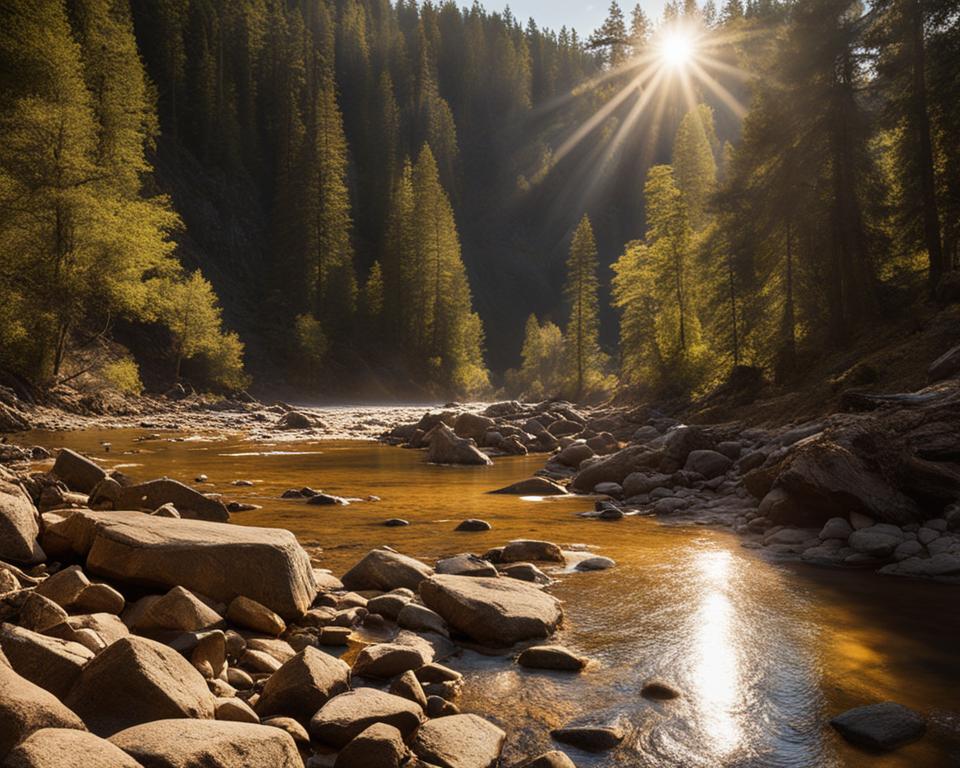
Tips for Successful Gold Panning in California
- Research the history of the area to better understand the potential for gold deposits.
- Observe local regulations and obtain any necessary permits or permissions before panning.
- Choose the right equipment, including a gold pan, shovel, and classifier, to maximize your chances of finding gold.
- Focus on areas where the water flow slows down, such as behind rocks or in eddies, as gold particles tend to settle there.
- Practice patience and thoroughness while panning, taking the time to carefully separate the heavier gold from other sediments.
- Enjoy the experience and embrace the historical significance of the surroundings as you embark on your gold panning adventure in California.
Gold Panning in Nevada’s Desert Areas
Nevada, known as one of the top gold-producing states in the United States, offers a unique opportunity for recreational gold panning enthusiasts.
While professional mining remains the primary method of extraction, there are certain areas in Nevada where individuals can still try their luck at finding gold.
Rye Patch State Recreation Area, located in Lovelock, is a popular destination for gold panning in Nevada.
This scenic desert area provides a serene backdrop for prospecting adventures.
Visitors have the chance to uncover gold flakes and even nuggets as they pan along the riverbeds and in the surrounding areas.
If you’re planning a gold panning trip to Nevada, Rye Patch State Recreation Area should be on your list of potential locations.
With its rich history and promising gold-bearing grounds, this state recreation area offers an exciting opportunity to experience the thrill of finding gold in the desert.
Why Choose Rye Patch State Recreation Area?
Rye Patch State Recreation Area stands out as a favored destination for gold panning in Nevada due to several factors:
- The area’s geological composition makes it conducive to gold deposition, increasing the chances of finding valuable gold particles.
- The serene desert setting provides a tranquil and picturesque environment for prospecting activities.
- Rye Patch State Recreation Area is easily accessible, making it convenient for both local visitors and those traveling from afar.
- With the proper permits and equipment, visitors have the potential to discover gold flakes and nuggets, creating memories that will last a lifetime.
Whether you’re a seasoned prospector or a beginner looking to embark on your first gold panning adventure, Rye Patch State Recreation Area in Nevada offers an idyllic backdrop for discovering the treasures hidden beneath the earth’s surface.
Testimonials
“I never thought I would find gold in the middle of the Nevada desert, but Rye Patch State Recreation Area proved me wrong. The thrill of finding those sparkling flakes was unforgettable!” – Sarah
My family and I had a fantastic time panning for gold at Rye Patch. It was a great bonding experience, and we even found a few small nuggets. Highly recommended!” – Mark
Embark on a gold panning adventure in Nevada’s scenic desert areas. Visit Rye Patch State Recreation Area and discover the joy of finding gold in the midst of nature’s beauty.
Gold Panning in Alaska’s Klondike Region
Alaska boasts a rich gold mining history, with the Klondike Gold Rush standing out as one of the most renowned gold rushes in history.
While professional mining operations dominate the region, there are also public access areas that provide amateur gold panners with the opportunity to try their luck.
One such area is the South Fork Koyukuk River, located along the Dalton Highway.
This picturesque location offers a chance to experience gold panning in the heart of Alaska’s Klondike region.
Immerse yourself in the same landscapes that attracted thousands of hopeful prospectors during the Klondike Gold Rush.
The South Fork Koyukuk River, with its pristine waters and breathtaking views, is a popular destination for those seeking adventure and a taste of gold panning history.
“Gold panning in Alaska’s Klondike region is a unique experience that allows you to connect with the pioneers who braved harsh conditions in search of fortune. The thrill of discovering gold firsthand is unparalleled, making it a must-visit destination for any avid gold panner.”
– John Smith, avid gold panner
Whether you are a seasoned gold panner or a novice looking to try your hand at this exciting activity, Alaska’s Klondike region offers an abundance of opportunities.
You’ll have the chance to pan for gold in a location steeped in history and surrounded by stunning natural beauty.
Key highlights of gold panning in Alaska’s Klondike region:
- Explore the same rivers and streams that attracted prospectors during the Klondike Gold Rush.
- Enjoy the pristine wilderness and breathtaking landscapes while panning for gold.
- Experience the thrill of finding gold nuggets and flakes, just as the early pioneers did.
- Learn about the history of gold mining in Alaska and the challenges faced by the early prospectors.
So, pack your gold pan, grab your shovel, and head to Alaska’s Klondike region for an unforgettable gold panning adventure.
Whether you strike it rich or not, the experience itself is priceless.
FAQ
Q: Can you just pan for gold anywhere?
A: No, not all locations are suitable for finding gold. It is important to choose the right location to increase your chances of success.
Q: What are some tips for choosing the right location for gold panning?
A: Research the area beforehand, look for evidence of gold, and ensure it is legally permitted to pan for gold in that location.
Q: What are the legal considerations for gold panning?
A: Familiarize yourself with the laws and regulations governing gold panning in the specific location. Different areas may have different rules regarding access, permission, and equipment usage. Ignorance of the law can lead to legal consequences.
Q: Are there publicly accessible gold panning locations?
A: Yes, some public lands allow gold panning. However, it is important to check if a specific area is open for recreational gold panning. National parks and state recreational areas may have designated locations where gold panning is allowed.
Q: Can I purchase gold placer claims?
A: Yes, you can purchase gold placer claims, which provide exclusive rights to prospect for gold in a specific area. However, it is important to follow the legal process and comply with the laws and regulations governing gold mining.
Q: What equipment and techniques are needed for panning in streams and rivers?
A: Proper gold panning techniques, along with the right equipment and supplies, can enhance the chances of finding gold. This can include a gold pan, shovel, classifier, snuffer bottle, and more.
Q: Where can I try gold panning in the areas associated with the California Gold Rush?
A: The American River, where the Gold Rush started, and Auburn State Recreation Area are popular spots for gold panning in California.
Q: Are there any locations in Nevada where I can pan for gold?
A: Yes, Rye Patch State Recreation Area in Lovelock is a popular location for gold panning in Nevada, offering the chance to find gold flakes and nuggets.
Q: Can I pan for gold in Alaska?
A: While professional mining operations dominate the region, there are public access areas in Alaska where amateur gold panners can try their luck. The South Fork Koyukuk River, located along the Dalton Highway, is one such area where gold panning is permitted.
Q: Any final thoughts on gold panning?
A: Gold panning can be an enjoyable hobby and a way to connect with the history of gold mining in the United States. However, it is important to research and choose the right locations for gold panning. Understanding the legal considerations and regulations associated with gold panning is crucial to ensure a successful and lawful experience. Always respect the environment and follow best practices for responsible gold panning.
Source Links
- https://www.luckypanner.com/choosing-a-location-to-pan-for-gold/
- https://www.smithsonianmag.com/travel/five-places-where-you-can-still-find-gold-in-the-united-states-180982063/
- https://www.aarp.org/money/budgeting-saving/info-2023/how-to-pan-for-gold.html
Conclusion
Gold panning is a fascinating hobby that allows you to immerse yourself in the rich history of gold mining in the United States.
However, to make the most of your gold panning adventure, it is crucial to choose the right locations.
Conduct thorough research to identify areas with a history of gold deposits and ensure that you are panning in legal and permitted locations.
Understanding the legal considerations and regulations surrounding gold panning is essential.
Different areas may have specific rules regarding access, permits, and equipment usage.
By following these regulations, you can avoid legal consequences and ensure a successful and enjoyable gold panning experience.
Respecting the environment is also paramount in responsible gold panning.
Always follow best practices, such as filling in your holes and avoiding disturbing natural habitats.
By doing so, you can minimize your impact on the surrounding ecosystem and preserve the beauty of the areas you visit.
Gold panning offers a unique way to connect with America’s gold mining heritage.
By researching, choosing the right locations, understanding the legal requirements, and respecting the environment, you can embark on an exciting and rewarding gold panning journey.
So grab your pan and start exploring the possibilities of finding your own golden treasure!

Meet Ryan Conlon, the passionate owner and driving force behind Pan for Treasure.
With an unwavering love for the art of gold panning, Ryan has transformed his enthusiasm into a thriving community hub for fellow treasure seekers. info@panfortreasure.com
A seasoned gold panning enthusiast, Ryan’s journey began with a simple pan and a dream, evolving into a deep appreciation for the history, geology, and thrill of uncovering precious metals.
Subscribe to Our Newsletter


